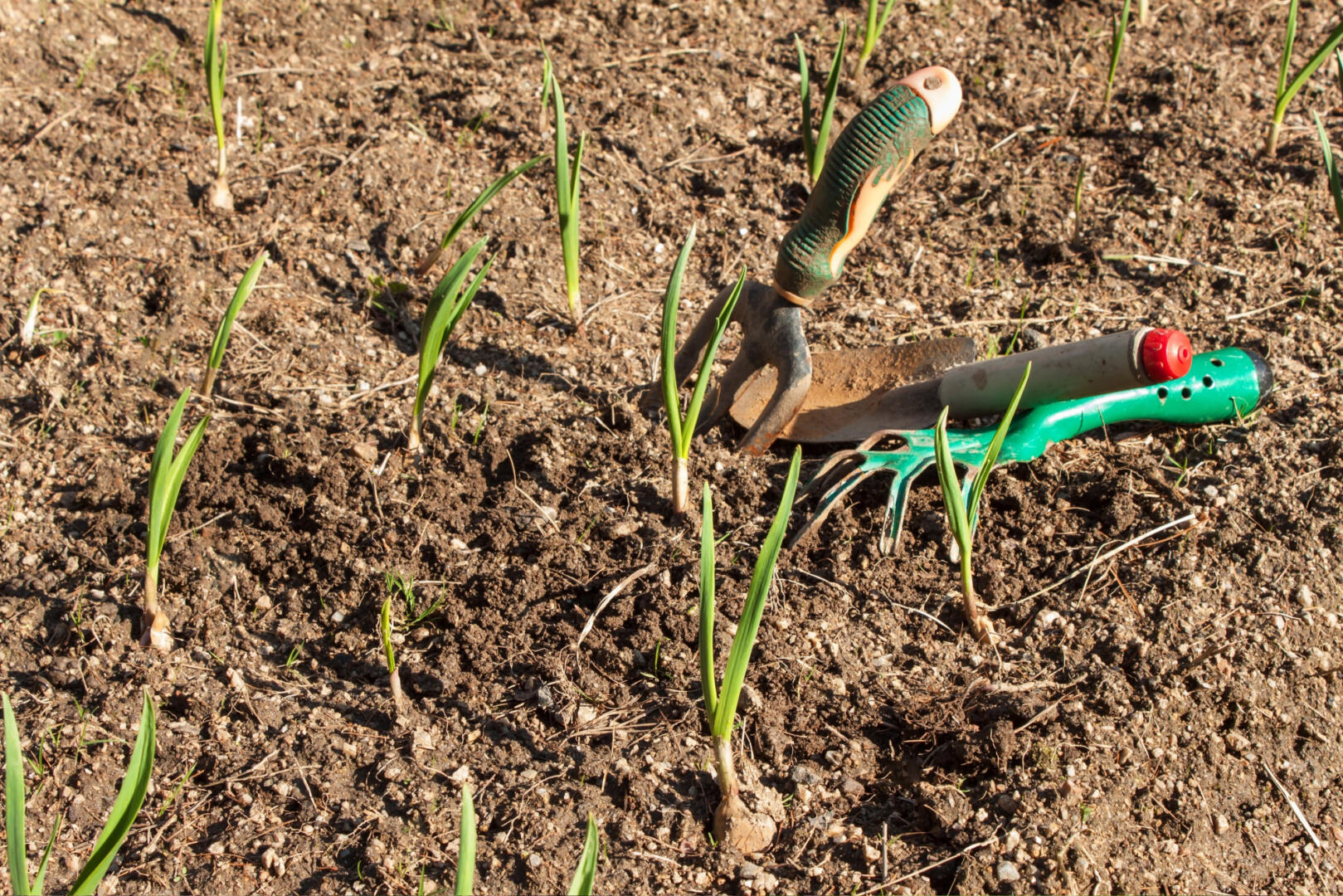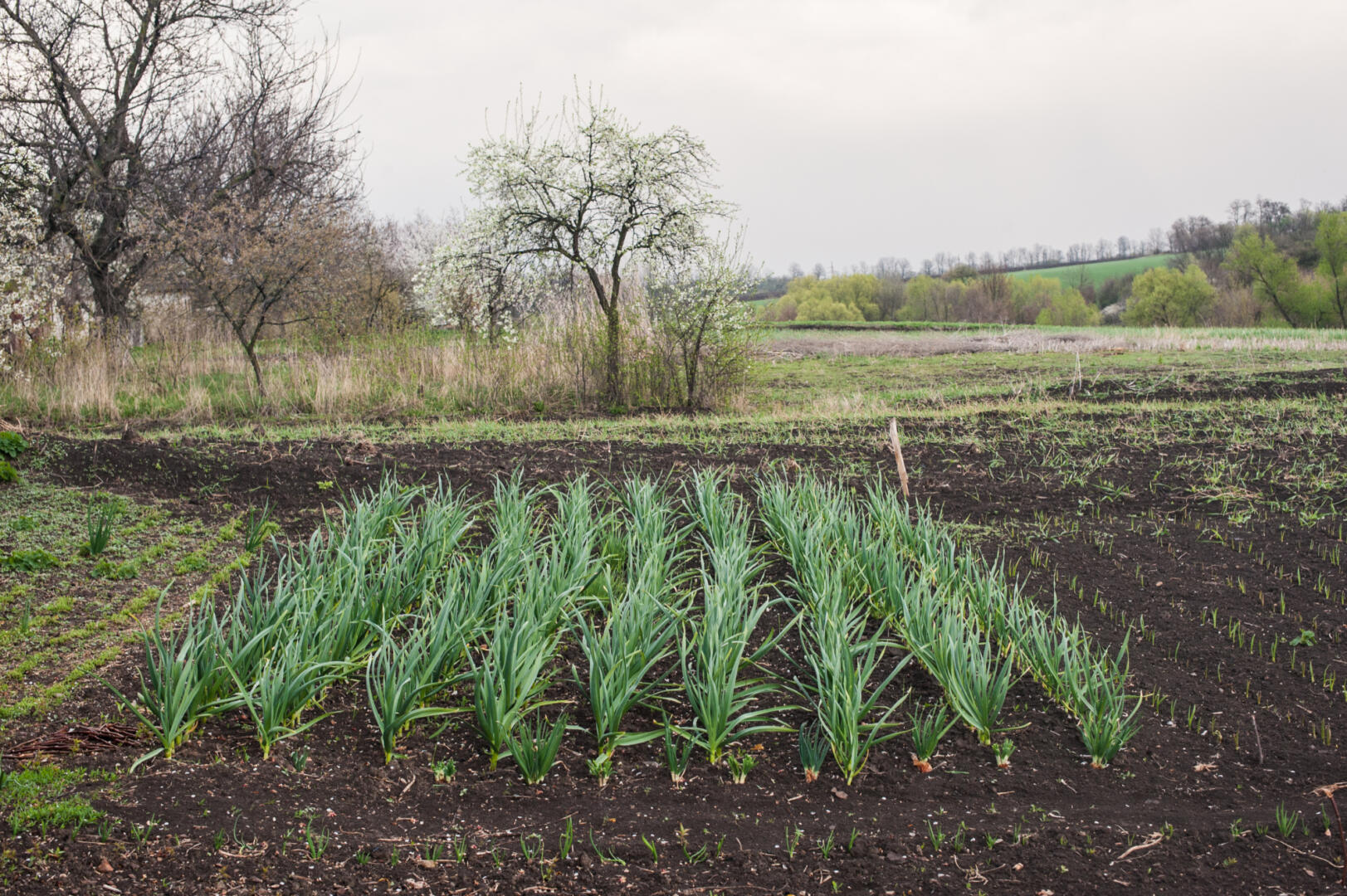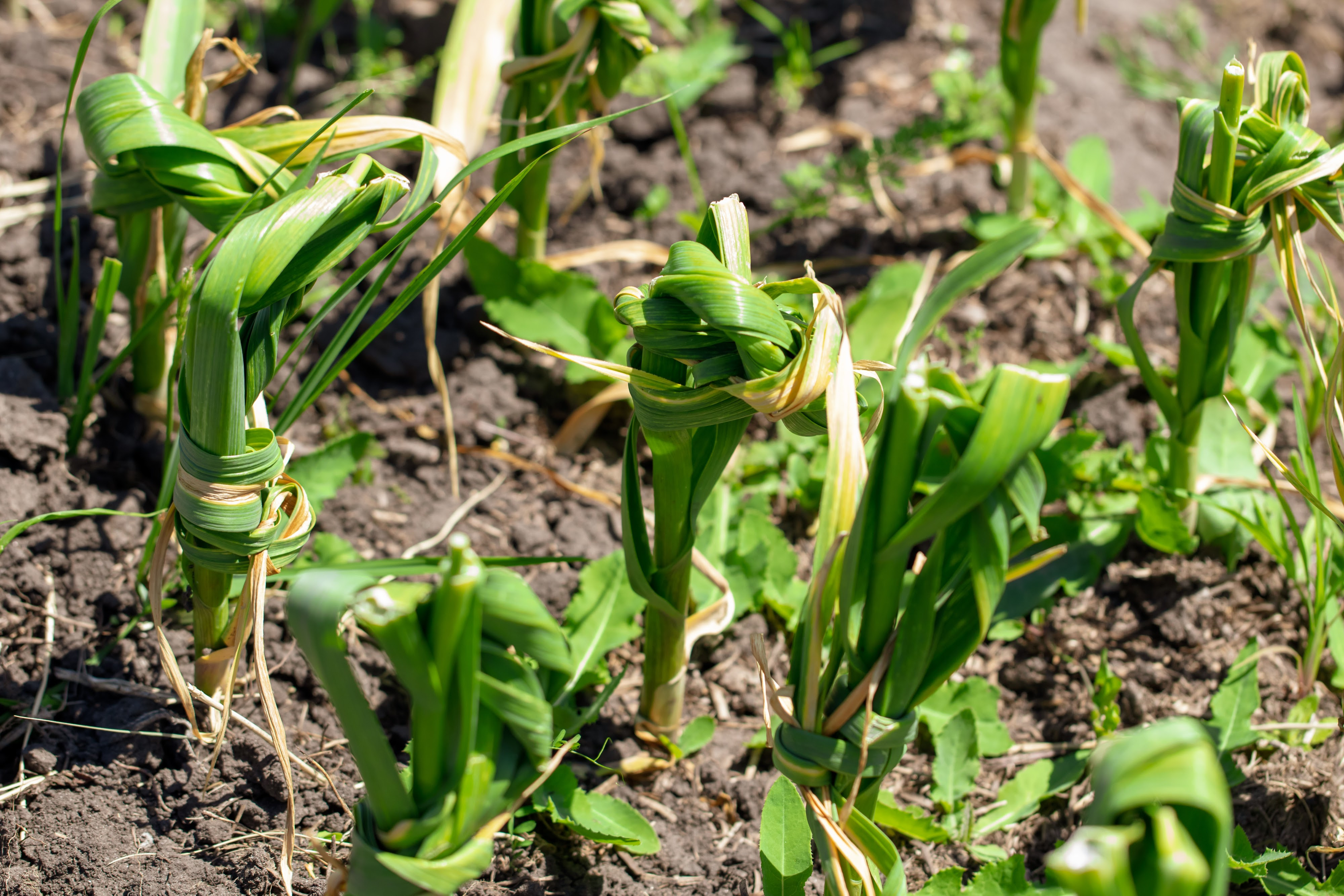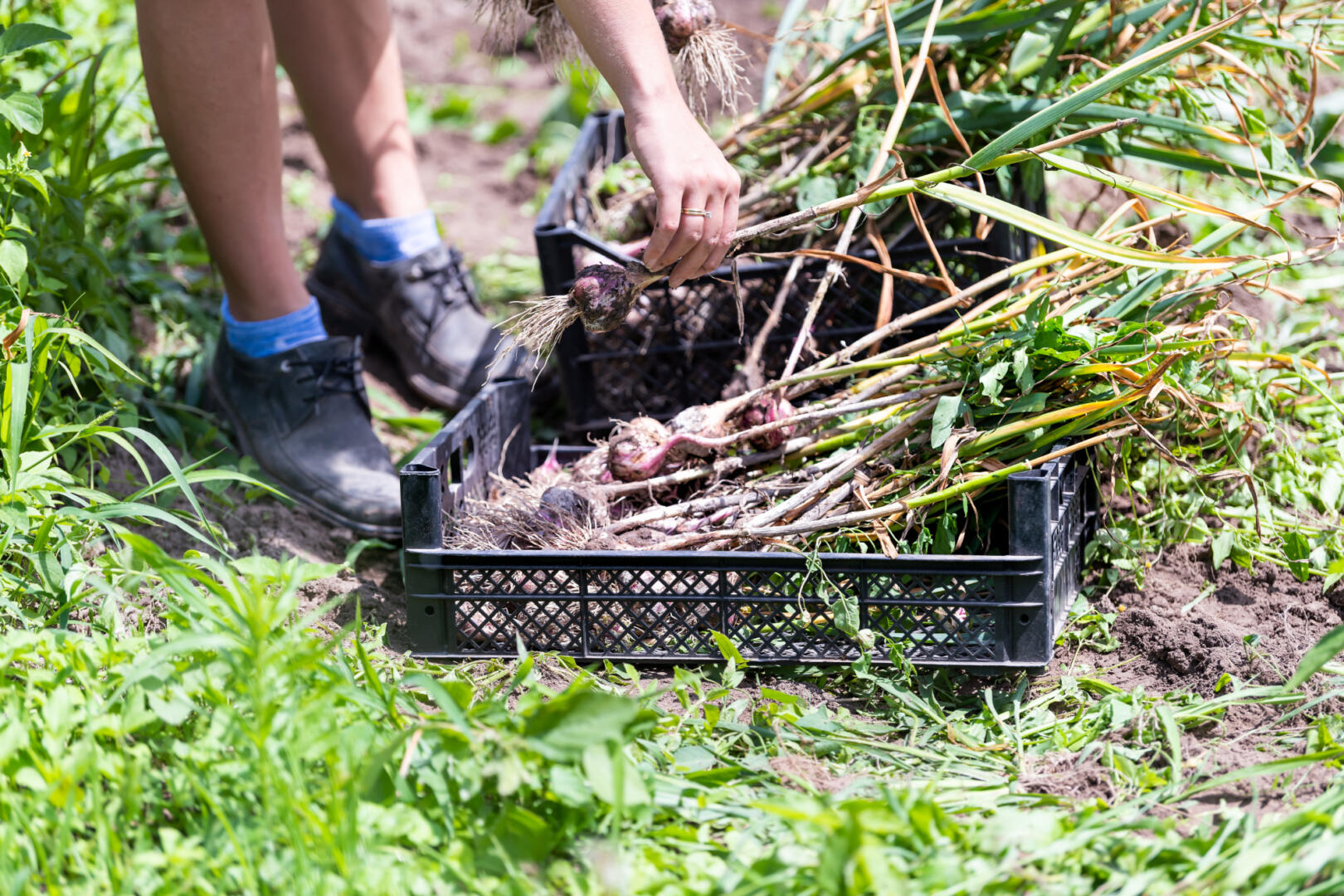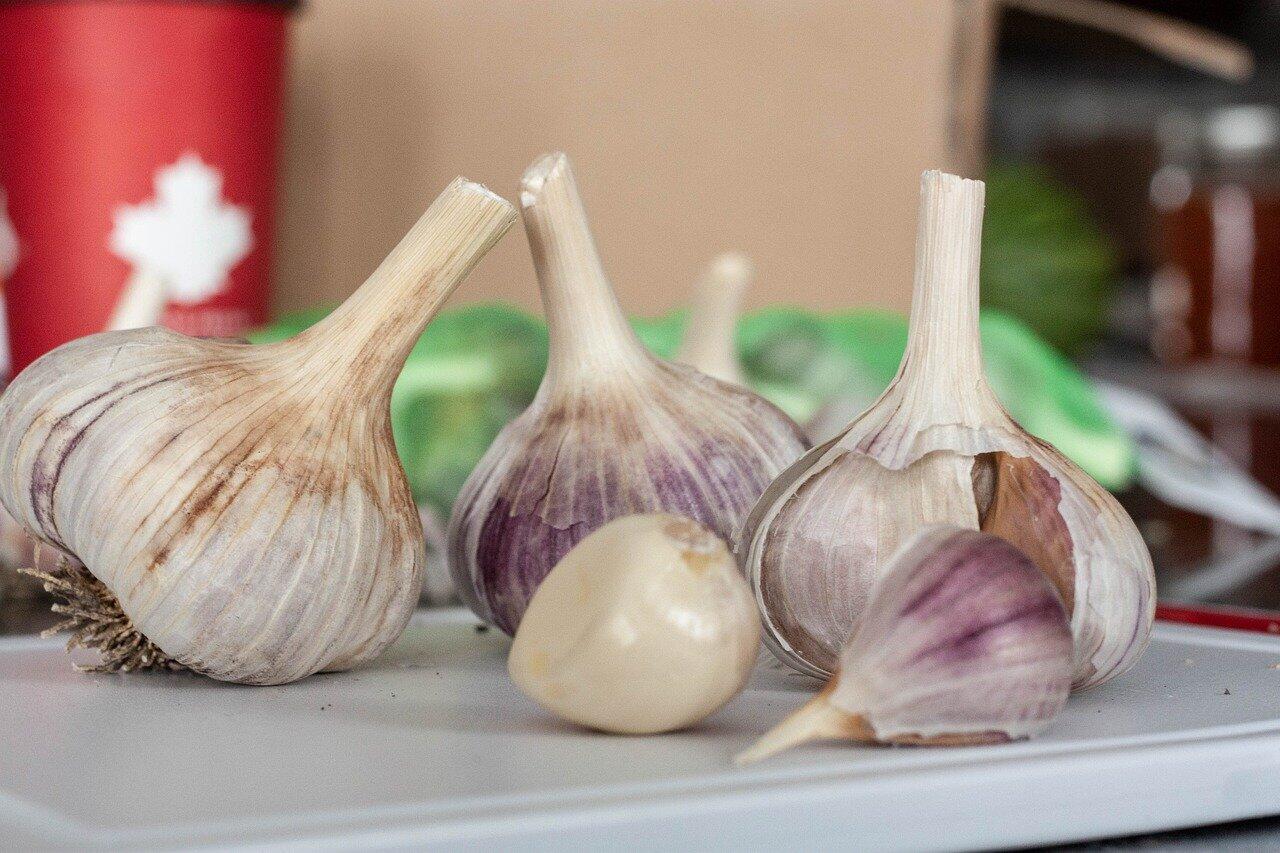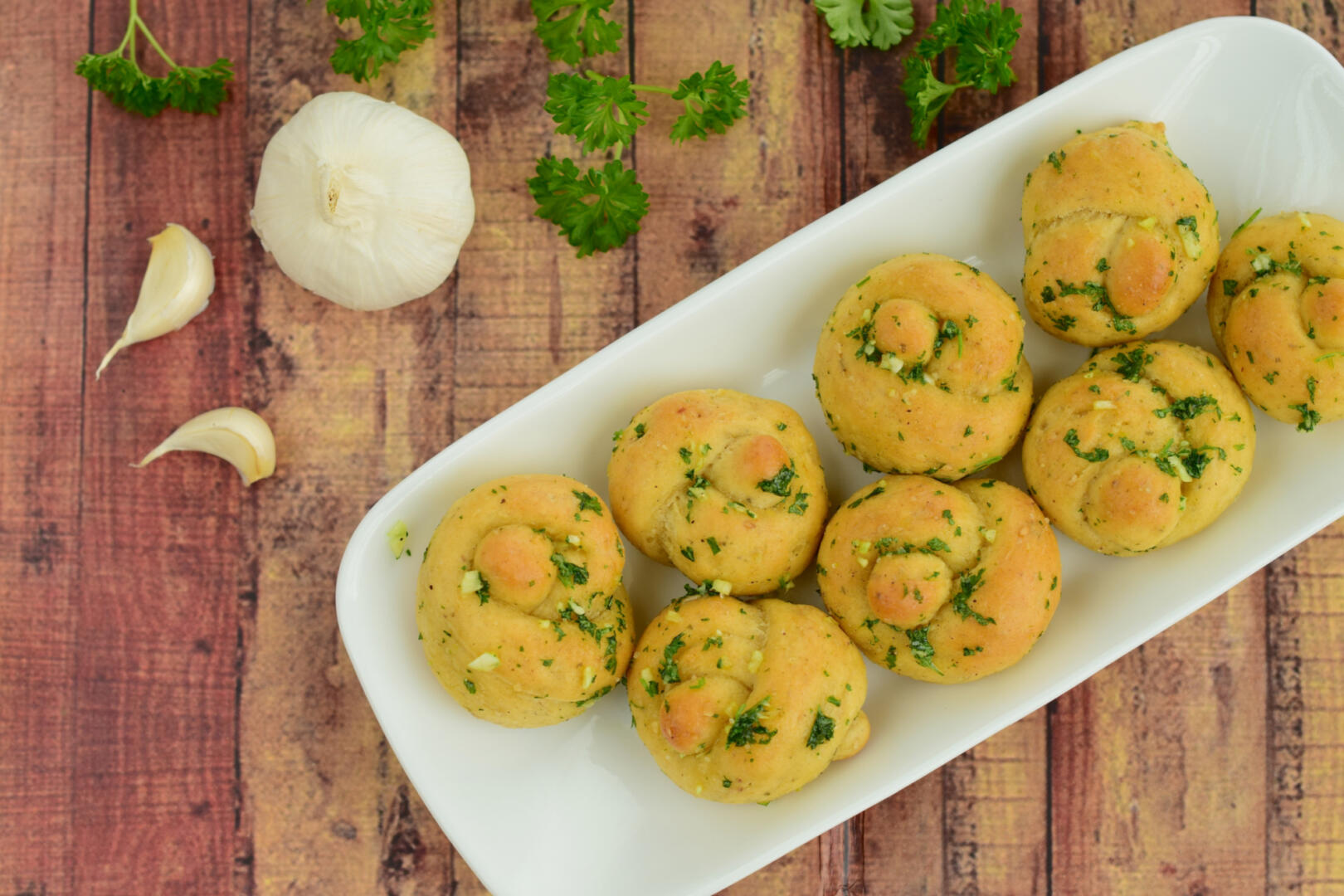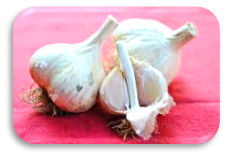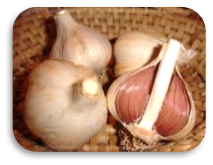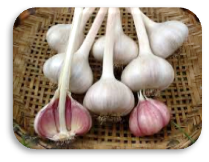Garlic (Allium sativum) has had a long and rich history of both factual and mystical properties. It is one of the oldest cultivated crops and has been a staple in many diets. Garlic is rich in antioxidants and beneficial compounds that are considered to have positive health attributes. One of the best ways to enjoy a variety of garlic cultivars is to grow your own garlic.
Why Grow Garlic?
Garlic is easy to grow and, if grown properly, has very few pest and disease problems in the home garden. It requires little space and can be planted in the fall after many other crops have been harvested.
Hardneck vs. Softneck
Although there are many types of garlic, they can be classified into two broad categories: hardneck and softneck. Each category has several groups with their own characteristics and advantages.
Hardneck garlic is more closely related to wild garlic and typically has four to twelve cloves around a center flowering stalk. The hardneck stalk, known as a scape, is topped by a capsule referred to as an umbel that contains small aerial cloves called bulbils. Hardneck garlic is more flavorful, and the cloves can be peeled from the skin more easily. The edible hardneck scape provides a milder taste in advance of harvesting the bulbs. For all these reasons, hardneck garlic is favored by gourmet chefs.
Softneck garlic does not produce a flower stalk and typically has more cloves per bulb since all the energy goes to produce the bulb rather than the bulb and the flower stalk. Softneck garlic is easier to grow and typically has ten to forty cloves arranged in multiple layers. It can be braided and generally has a longer shelf life than the hardneck variety—six to eight months as compared with hardneck’s two to four months. Softneck garlic is more likely to be what you find in the supermarket.
Prepare the Planting Bed
Plant in a sunny location in fertile loam with a pH between 6-7. You will need to manage a rotation away from alliums for at least three years. Soil should be loose to a depth of 8” and contain a rich supply of organic matter.
Plant the Garlic Cloves
During the second week of October, separate the garlic bulb into individual garlic cloves and plant each individual clove with the flat basal plate end down and the pointed end up at a depth of 2” from the pointed tip of the clove to the soil surface. Run in a single row with a 5” spacing between cloves or in a double row with an 8” spacing between the rows and a 5” spacing between cloves within each row. Level the soil surface so that the cloves are covered with soil. Fertilize the planting bed with compost or liquid fertilizer. Cover the planting bed with 8” of dry grass clippings or 8” of a mixture of shredded leaves and grass clippings for weed control and to prevent frost heaving of the cloves.
Maintain the Planting Bed
Generally, in spring, the leaf/grass planting bed cover is not removed so as to continue to control weeds, hold moisture, and add organic matter. The planting bed should be maintained free of weeds throughout the growing season. The planting bed should receive about 1” of water per week until the lower set of garlic leaves begin to yellow, and the garlic bulbs begin to dry. The planting bed should be fertilized in early spring as the young garlic plants begin to green and once again as the garlic plants begin to bulb. (In spring the garlic plants can be harvested as green garlic and the leaves/cloves used just as green onions (scallions) are used.)
Remove the Scapes
Hardneck garlic sends up a stalk called scape which initially curls and eventually straightens with a small bulb containing bubils (tiny “seeds”) at the tip. It is very important that the scapes be cut off about 1” above the upper set of garlic leaves when the scapes are about 8” long so that the garlic plant devotes energy into the underground bulb formation and not into the bubils. If the scapes are not removed, then the garlic bulb will be noticeably smaller at harvest. (The scapes can be stir-fried or roasted.)
Harvest the Garlic Bulbs
In late June or July, depending on the weather, as the lower sets of leaves turn yellow while the upper leaves are still green, harvest the garlic bulbs by pushing a garden fork into the planting bed about 3” away from each individual bulb and lifting the bulb from the soil. Rub loose soil away from the bulb and roots. (Normally softneck garlic is used for braiding, but hardneck garlic can also be braided at harvest time while the stalks are relatively soft and pliable.)
Dry the Garlic Bulbs
Dry the garlic bulbs in a single layer, away from the sun and extreme heat, in a place with good air circulation. As the outside layer of garlic bulb skin dries, gently rub loose soil from the bulbs and roots.
Use the Garlic Bulbs
The smaller harvested garlic bulbs are generally used for purposes related to food while the largest harvested garlic bulbs are separated into cloves for planting. There is a direct relationship between the size of the fall-planted garlic clove and the summer-harvested garlic bulb. With environmental factors being equal, the largest planted clove will yield the largest harvested bulb. Further, each variety of garlic will acclimate to the total environmental factors within a local planting site. Over a three-year plant/harvest cycle, if the environment is favorable to a given variety of garlic introduced to a planting site, then the harvested garlic bulbs will flourish and generally increase in size over the years, while if the environment is unfavorable, then the harvested bulbs will decrease in vigor and size over the years.

